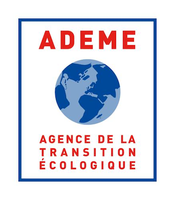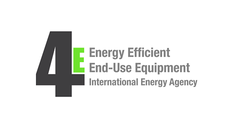Search eceee proceedings
Engaging households in energy efficiency action at the local level: A case study of Energy Efficient Scotland
Panel: 5. Towards sustainable and resilient communities
This is a peer-reviewed paper.
Authors:
Katherine Sugar, United Kingdom
Janette Webb, University of Edinburgh, United Kingdom
Faye Wade, University of Edinburgh, United Kingdom
Abstract
High standards of energy efficiency in buildings are critical for achieving a low carbon and just society. In Scotland, energy efficiency was designated a National Infrastructure Priority in 2015. Domestic properties account for 13% of Scotland’s total greenhouse gas emissions (Heat in Buildings Strategy, 2021), and owner-occupied properties constitute the largest proportion of these. Engaging private householders in significant upgrades to their homes has proved to be challenging, but is crucial for achieving climate targets. Local authorities have been recognised as having a vital role in enabling energy transitions by bringing local property owners, businesses and social enterprises together and acting as key agents of change (Webb & Tingey, 2020). This paper focuses on the role of local authorities in engaging private householders in energy efficiency measures, using the case study of the Energy Efficient Scotland programme. Set up by the Scottish Government, this programme tested mechanisms for improving energy efficiency in all homes, business and public buildings during 2016-2019. As part of the programme, local authorities piloted different citizen engagement strategies including: mail-outs (postal or electronic), in-home visits and high-street ‘energy hubs’ (or drop-in centres).
We present findings from a social survey, which examined householder attitudes towards, and outcomes of, these different engagement strategies. Questions were designed to establish the extent to which the strategies affected domestic sector engagement with, and investment in, energy efficiency measures. In total, 490 households responded across eight Scottish local authorities. The returned data were anonymised for privacy and confidentiality. The key descriptive statistics and themes were analysed, and triangulated with data from previous Energy Efficient Scotland pilots.
Our findings demonstrate that overall, the Energy Efficient Scotland programme had a positive impact on Scottish households through the provision of advice which stimulated action: 61% of homeowners installed, or planned to install measures to improve the energy efficiency of their homes after engagement. In addition, respondents regarded energy efficiency advice from local authorities as trustworthy, which supports proposals for such advisory services to become a statutory duty for local authorities, given their key influencing capacity within the local community (Hofman et al. 2021). The provision of a drop-in centre was the strategy that stimulated the most positive response in terms of useful advice, and resulted in the most plans and actions. By acting as a point for dedicated, face-to-face interaction which can lead to increased trust in, and momentum from, services, this strategy served as an effective tool for householder action.
Barriers to householder action included cost, which reinforces related proposals for increased, long-term funding for homeowners to retrofit property. The lack of new, more specific information was also a barrier to household action. Whilst the provision of information through the programme was beneficial, national-led programmes need to enhance services with more detailed information tailored to household type, including for properties in conservation areas. Appropriate funding, skills and staff resources are also needed for local authorities to catalyse effective change. In conclusion, we consider the drop-in centre as an innovative community engagement tool which resulted in the most change in the Scottish pilot localities. Particularly from a local authority perspective, this strategy should be further examined as a long-term means to stimulating citizen engagement in energy efficiency.
Downloads
Download this presentation as pdf: 5-075_Sugar_pres.pdf
Panels of
1. Dynamics of consumption: less is more?
2. Efficiency and beyond: innovative energy demand policies
3. Policy, finance and governance
4. Monitoring and evaluation for a wise, just and inclusive transition
5. Towards sustainable and resilient communities
6. Energy-efficient and low-carbon mobility for all
7. Policies and programmes for better buildings
8. Innovations in products, systems and building technologies



























